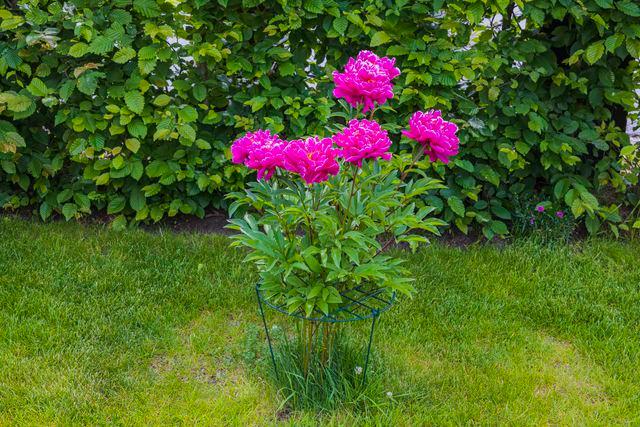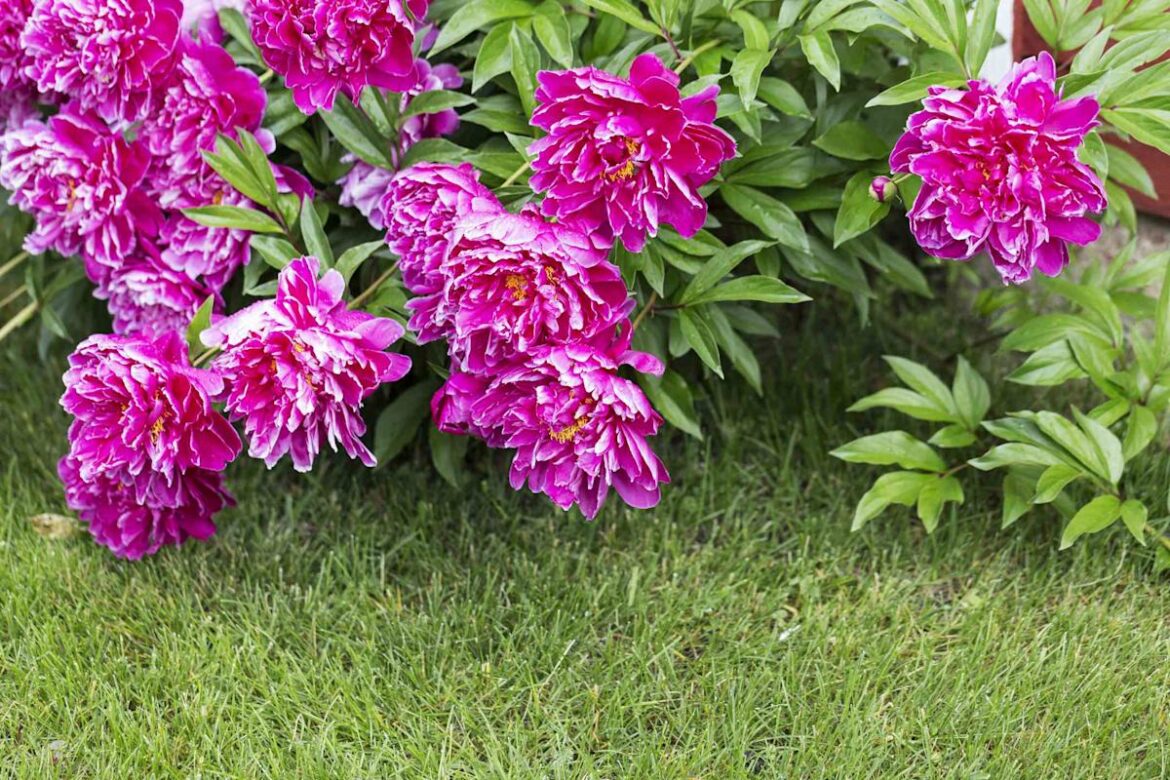Peonies fall over due to external factors like harsh weather, weak stems, or they’re not being planted deep enough.
To prevent them from falling over, move your peonies to a sunnier location, plant them deeper, or choose compact varieties.
Use wooden or metal stakes or peony cages to help fully support them, especially when they’re young and growing.
Peonies are a beloved perennial for their gorgeous blooms, longevity, and hardy nature. With the right growing conditions, they need minimal care beyond deadheading. But sometimes peonies fall over during the blooming season, with flowers leaning over and even hitting the ground. This is a somewhat common issue with peonies. Sometimes it’s weather-related (happening after a heavy rainstorm), but there may also be other possible causes.
We spoke with some gardening experts to explore the reasons why peonies sometimes fall over, and some possible solutions and tips for prevention.
Meet the Experts
Laura Janney is an expert gardener and CEO of The Inspired Garden Masterclass.
Annette Hird is an experienced gardener and writer specializing in horticulture for Easy Urban Gardens.

Imran Ashraf / Getty Images
Rain often causes peony flowers to droop or fall over.Why Peonies Fall Over
There are a number of reasons why your peonies might occasionally fall over. Sometimes there are external factors, like weather, but the truth is that some varieties of peonies just do this, especially those with taller stems. Annette Hird, an experienced gardener and horticulturist who writes for Easy Urban Gardens, says that peonies, like taller varieties of dahlias, have fairly weak stems that can’t always support their flowers, and that it’s a common trait of this species.
Hird also points out that some peony varieties have massive blooms, and after it rains, or if they are watered from above, these flowers become heavier with moisture, which causes the stems to droop or fall over. Gently shaking the rain from the flower heads can help, Laura Janney, CEO of The Inspired Garden Masterclass, says. She also recommends that if you see a heavy rain in the forecast, go ahead and cut them and enjoy because they may not bounce back after getting soggy. Peonies make gorgeous, long-lasting cut flowers.
Peonies are very long-lived, and if planted in a good location, will live for many years. But they need to be planted in well-drained, rich soil, in full sun, and at a proper depth to thrive. Janney says that if peony roots are not planted deep enough, this can lead to the stems falling over.

Buczek S / Getty Images
If peonies lean over while still in bud form, they may need more sun.
Want more gardening tips? Sign up for our free gardening newsletter for our best-growing tips, troubleshooting hacks, and more!
How to Prevent Peonies from Falling Over
There are a few preventive things you can do to try and get your peonies to stay upright while blooming.
Move to a More Sunny Location: If your peonies lean over while they are still in bud form, this often means they are reaching for sunlight. If this is the case, transplant your peonies to a more sunny location, ideally where they get at least six hours of direct sunlight per day. Since peonies are so long-lived, certain trees or shrubs that grow taller over time may cast more shade over peonies than they used to.
Plant Deeper: Peonies should be planted so that the eye buds on the stems are between two and three inches below the soil surface. This depth is important: too deep and they may not flower; too shallow, and the stems will lose stability and fall over.
Plant More Compact Varieties: Some varieties of peonies with shorter stems and/or smaller flowers are less likely to fall over. These include ‘Bowl of Beauty,’ ‘Paula Fay,’ ‘Athena,’ ‘Gay Paree,’ ‘Buckeye Belle,’ ‘Coral Sunset,’ and ‘Claire de Lune.” Tree peonies (Itoh) are also somewhat less likely to droop as the stems are thicker.
Fertilize Carefully: Don’t fertilize peonies in spring, as this may lead to the foliage and stems getting more energy than the buds, which might cause the stems to grow too tall and get flimsy. The only fertilizing your peonies should need (assuming they’re planted in a loamy, well-draining soil) is a light top dressing of aged manure in the fall.

Alexander Shapovalov / Getty Images
How to Support Peonies
Peonies are so valued for their beauty in the garden that their occasional tendency to fall over is seen as an acceptable flaw. Hird agrees that the only real solution to this problem is to stake them or provide another type of support (like a peony cage) when the blooms start to form.
Some gardeners use wooden or metal stakes as they’re easy to place and provide good support. You can also use sticks and string: Janney says a common way to do this is by using bamboo canes, tying strings around them in a circle to support the plant.
Metal peony cages come in a variety of sizes and shapes. You can place the cages over young plants as they emerge in spring, or set them up later: some have clips and hooks so you can enclose the plants easily, and some are made to support a single stem. Some cages are painted green for camouflage, while some are more elaborate and decorative. In a pinch, you can also use tomato cages, but be sure the base is wide enough to accommodate the peony as the leaves fill in.
Read the original article on The Spruce

